Subscribe to Science Friday
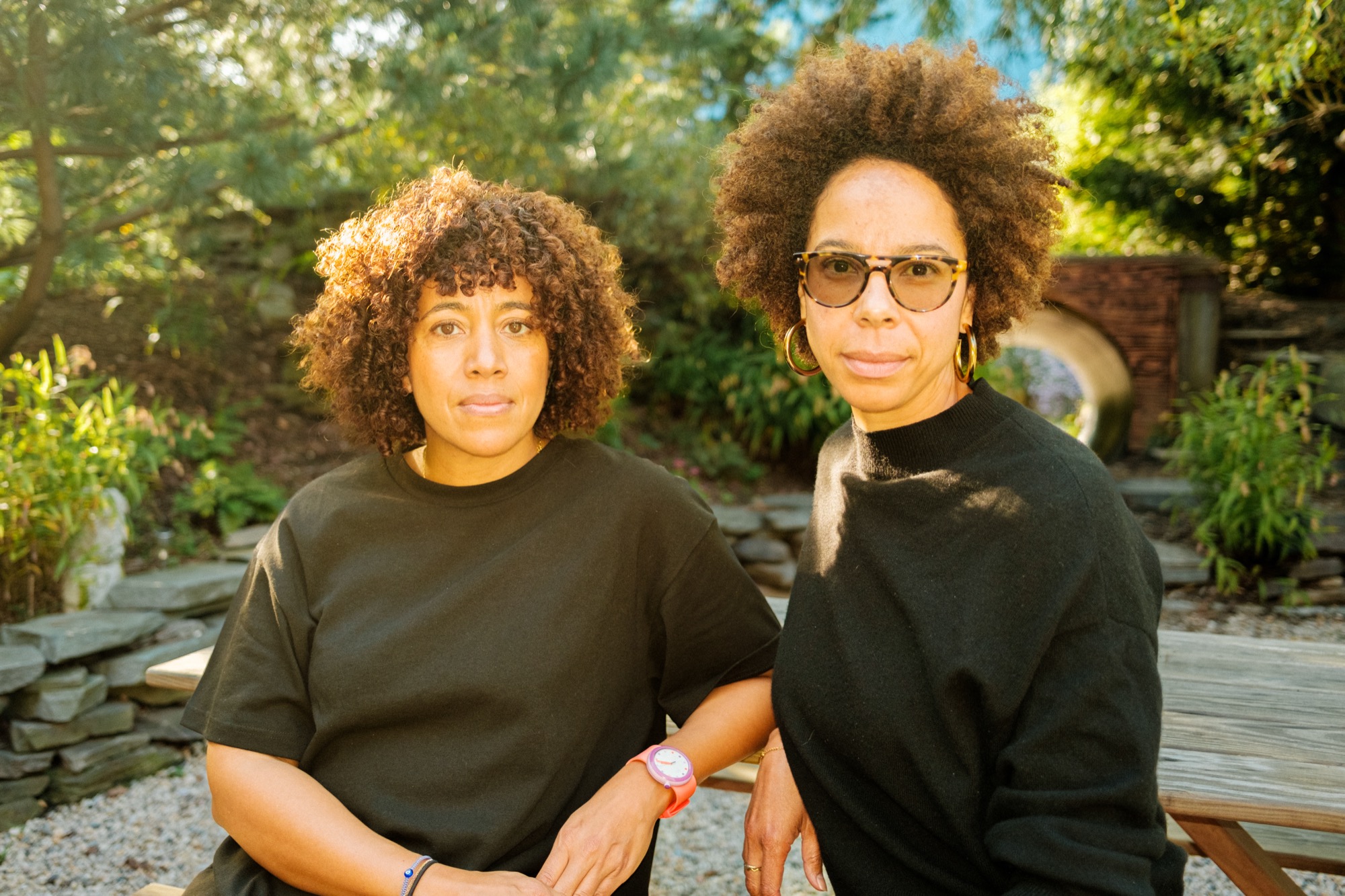
 Dr. Ayana Elizabeth Johnson, a marine biologist and co-founder of the nonprofit Urban Ocean Lab, thinks a lot about the possible futures of our climate. Not just one ideal climate future, but a range of futures that could be better if we make some changes.
Dr. Ayana Elizabeth Johnson, a marine biologist and co-founder of the nonprofit Urban Ocean Lab, thinks a lot about the possible futures of our climate. Not just one ideal climate future, but a range of futures that could be better if we make some changes.
She’s helped steer environmental policy, written books and articles on climate action, and co-hosted the podcast How To Save A Planet. And now she’s working with artists who are offering their own creative visions for how we could build a more sustainable society.
The effort has culminated in Climate Futurism, a new exhibit Dr. Johnson curated at Pioneer Works, a museum and performing arts space in Brooklyn, New York. And one of the central questions it asks the viewer is, what if we get it right?
SciFri producer D. Peterschmidt visited the exhibit and spoke to Dr. Johnson and one of the three featured artists, Erica Deeman, about food justice, reconnecting with nature, and why the exhibit is called Climate Futurism.
Climate Futurism features new art from Erica Deeman, Denice Frohman, and Olalekan Jeyifous. It runs until December 10, 2023.
Photos from Climate Futurism
Installation view of Erica Deeman, Denice Frohman and Olalekan Jeyifous: Climate Futurism at Pioneer Works, October 6 – December 10, 2023, curated by Dr. Ayana Elizabeth Johnson. Courtesy of the artists and Pioneer Works. Photos by Dan Bradica.
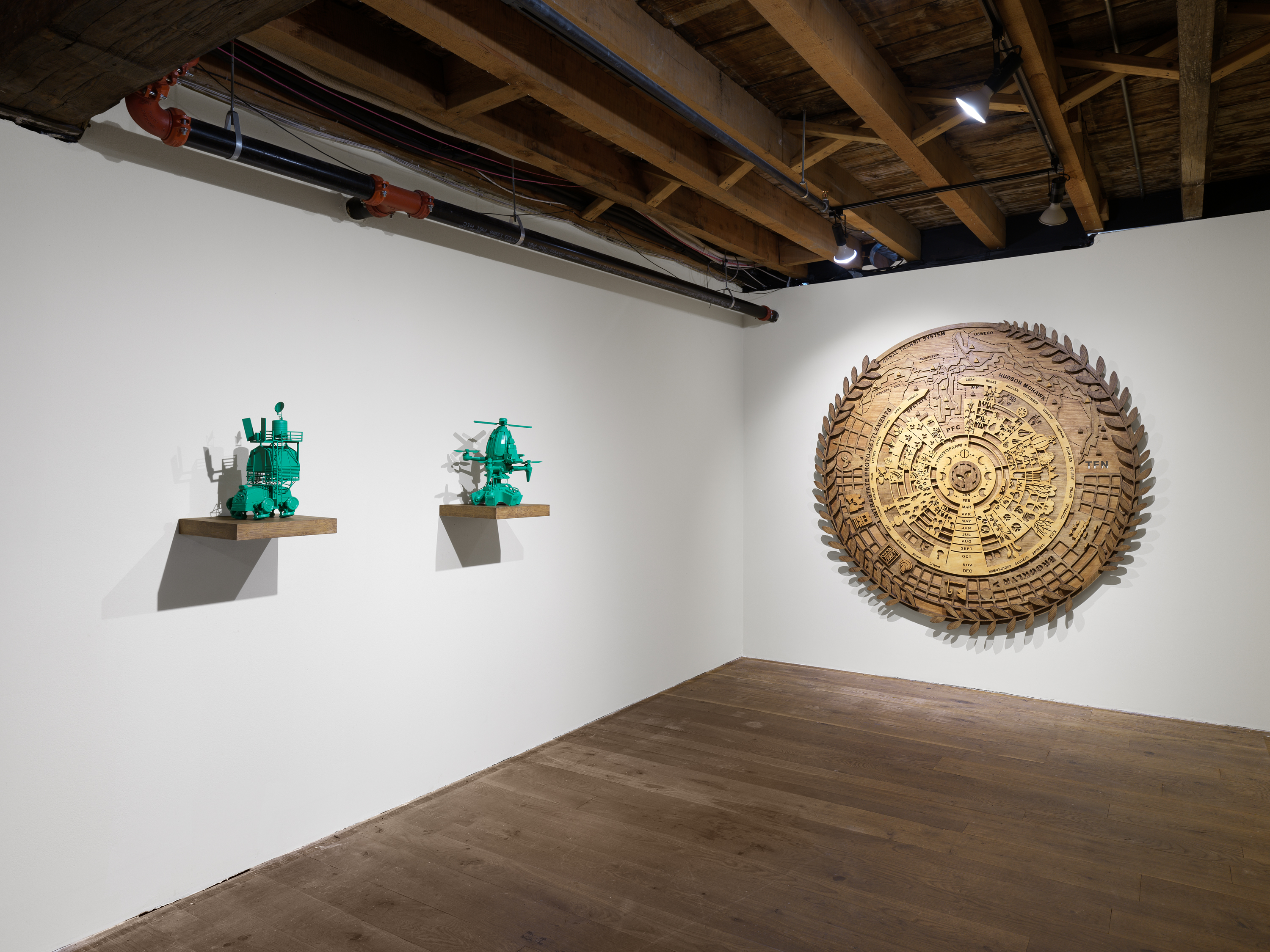
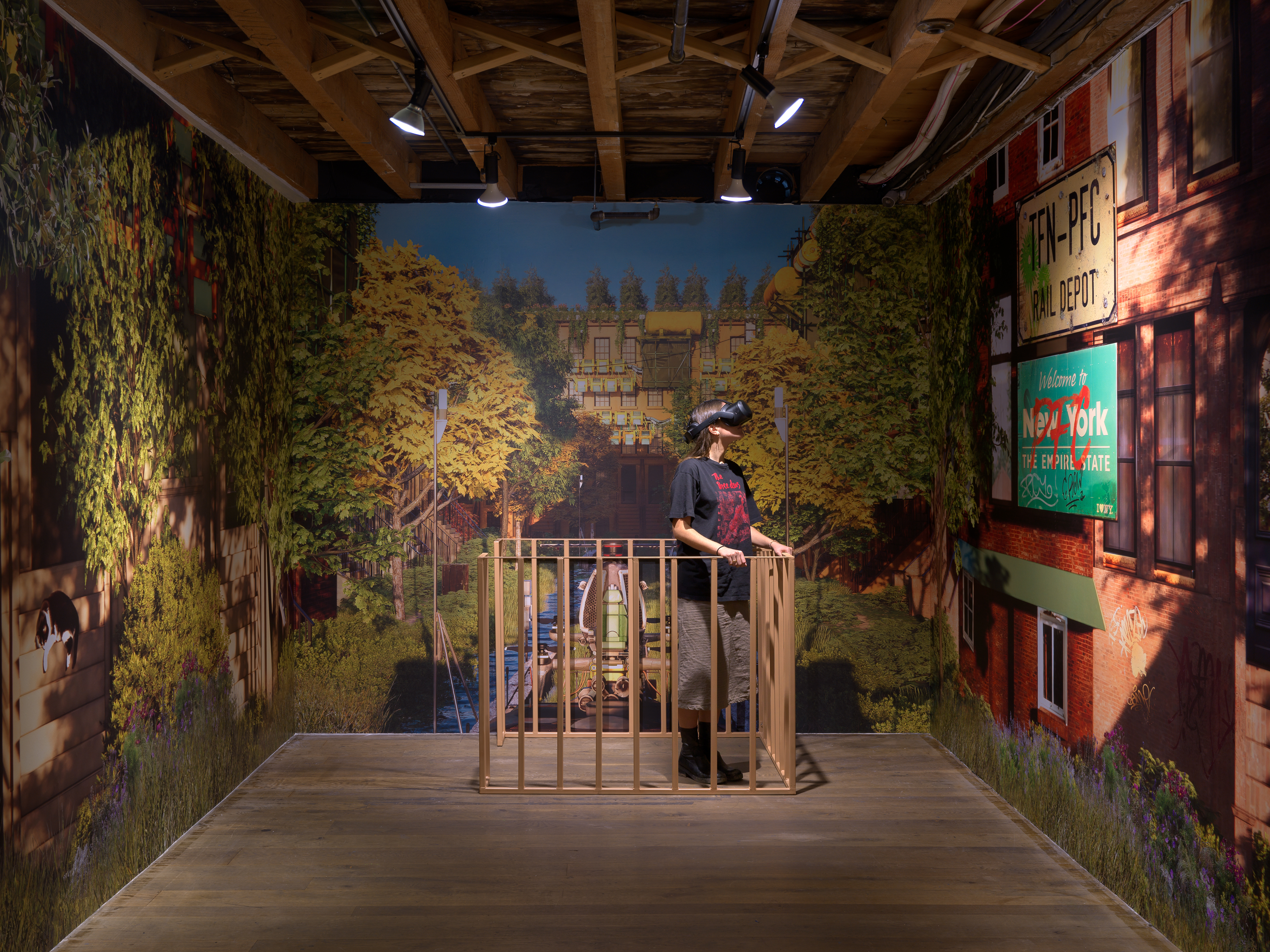
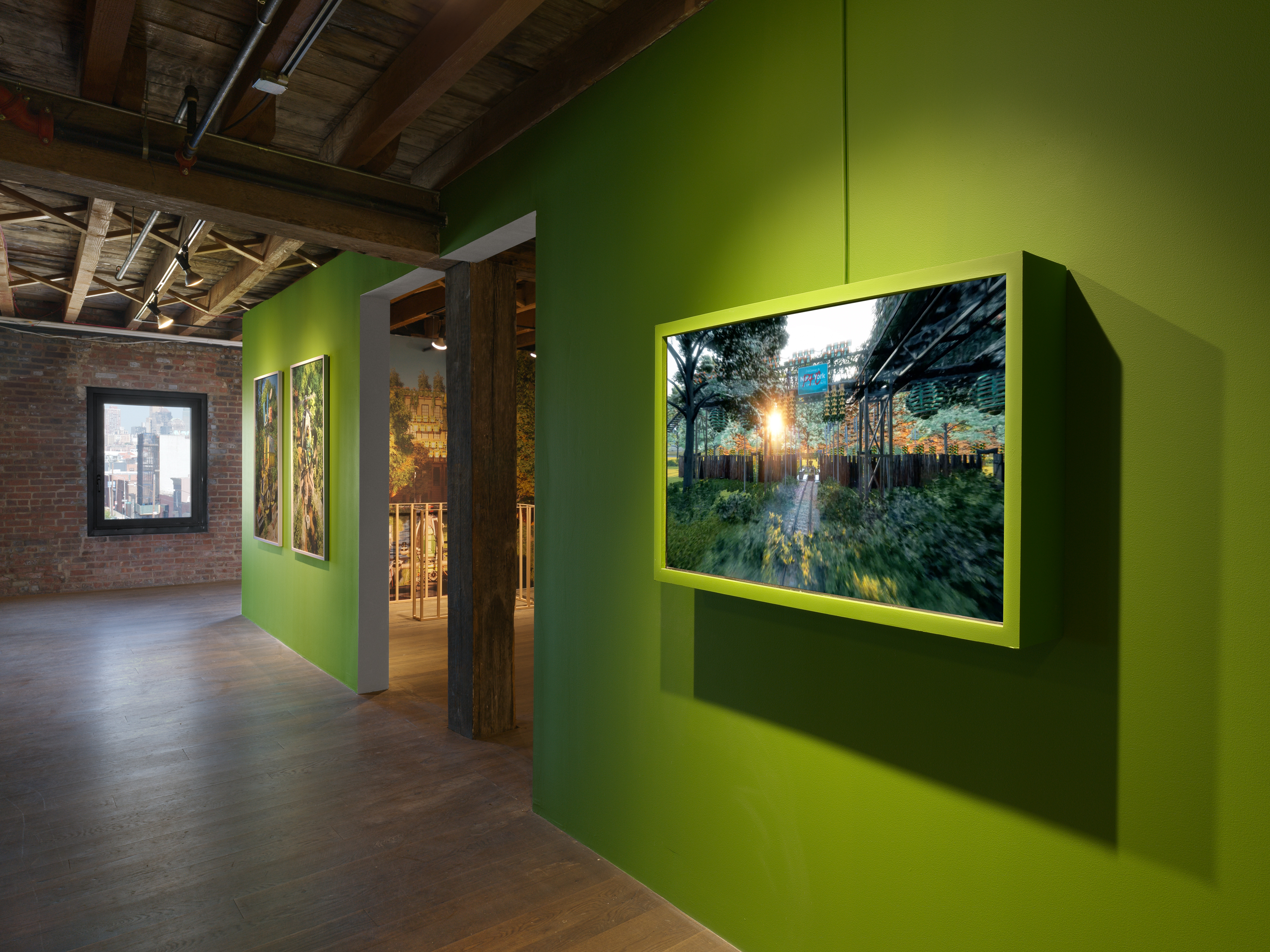
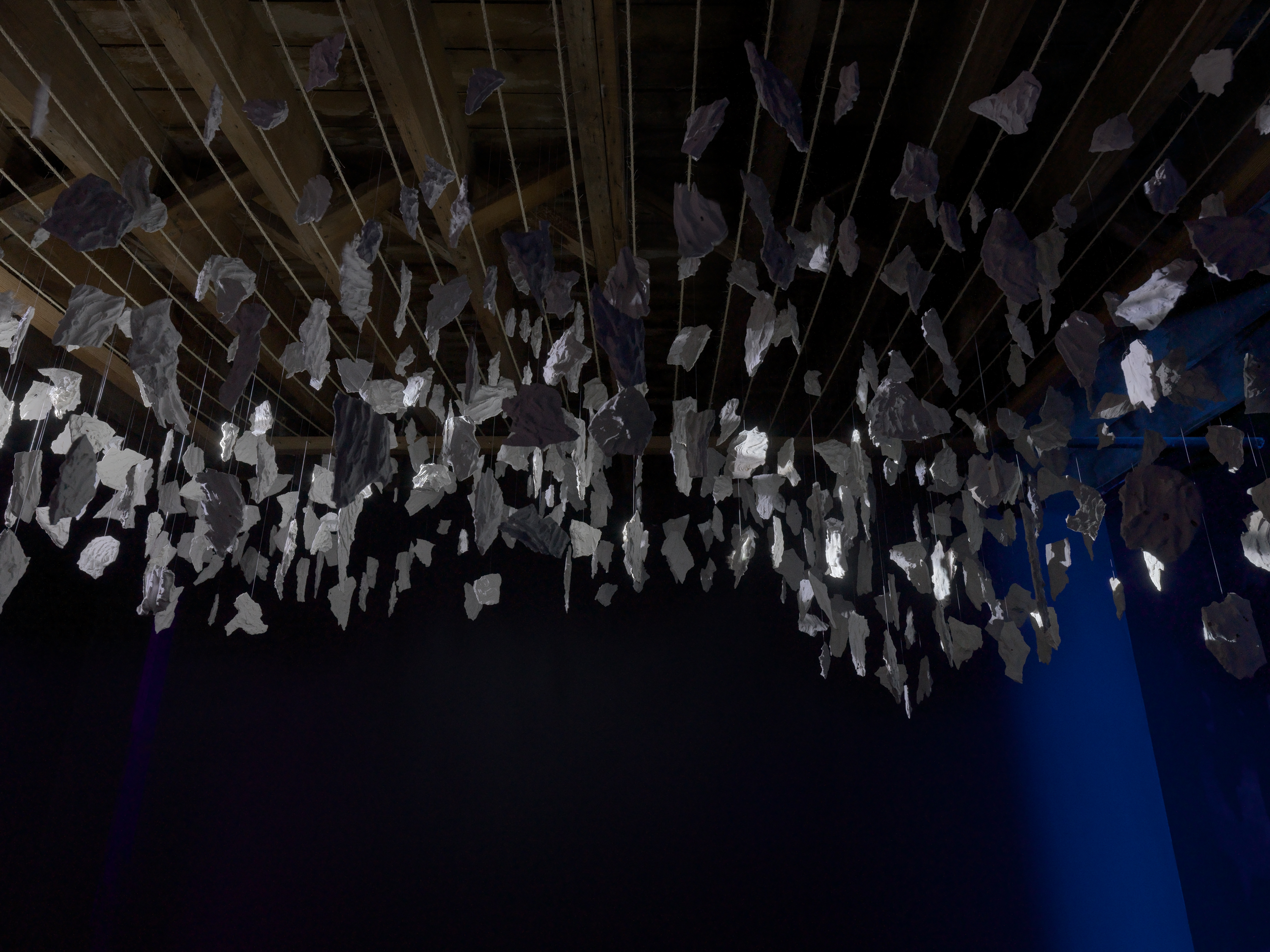
Segment Guests
Dr. Ayana Elizabeth Johnson is a marine biologist and the author of What If We Get It Right? Visions Of Climate Futures. She’s based in Brooklyn, New York.
Erica Deeman is a visual artist based in Seattle, Washington.
Segment Transcript
IRA FLATOW: For the rest of the hour, we want to focus on a museum exhibit about climate change that has a more hopeful outlook than most.
Dr. Ayana Elizabeth Johnson, a marine biologist and co-founder of the nonprofit Urban Ocean Lab, thinks a lot about not just one ideal climate future, but a range of futures that could be better if we make some changes. She’s helped steer related environmental policy, written books and articles on this topic, co-hosted the podcast, How to Save a Planet, and now she’s working with artists, who are offering their own creative visions for how we could build a more sustainable society.
Climate Futurism, a new exhibit at the Brooklyn-based Pioneer Works Museum and performing arts space was curated by Dr. Johnson. And one of the central questions it asks the viewer is, what if we get it right?
SciFri producer D. Peterschmidt checked out the exhibit last month and brought us back this postcard. Here’s D.
D. PETERSCHMIDT: I talked to Ayana, along with artist Erica Deeman, one of the exhibit’s three artists, about reconnecting with nature, food justice, and why the exhibit is called Climate Futurism. Ayana started by answering that question.
AYANA ELIZABETH JOHNSON: The question that I’ve been asking myself for a few years now is, what if we get it right? There’s so much like apocalypse, doom, in filmmaking, in social media, that I feel like we’ve lost the ability to imagine the future that we want.
And so when I think of climate futurism, I think about, OK, we have basically all the climate solutions we need. What if we actually implemented them? And so with this show, I was glad to have the opportunity to engage with artists around these questions of, what is the climate future we want to create? What should we take with us and what should we leave behind?
ERICA DEEMAN: My name is Erika Deeman. I am a visual artist. And I am sharing work as part of this installation.
D. PETERSCHMIDT: This is Science Friday, from WNYC Studios.
Erica lived in Seattle during 2021, which was the hottest summer on record for the city. She also had access to a garden there, and was reminded of the farm her parents once had in Jamaica.
ERICA DEEMAN: But then as I researched more and went into my family’s history and time in Jamaica, I was really inspired by what Jamaican farmers were doing with the land and with the acknowledgment of the change in the climate.
D. PETERSCHMIDT: Erica learned that Jamaica is experiencing declining rainfall due to climate change, which is forcing farmers to find new ways to tend to their crops. Some have partnered with the UN on a program that uses water tanks to collect rainfall from roofs, allowing farmers to stock up on water during dry periods.
It made her think about how this adaptability to climate change is connected to the adaptability of the Black diaspora, faced with the historical loss of sovereignty amidst the backdrop of the Middle Passage and colonialism.
For Erica, adaptability is a crucial component to Ayana’s question, what if we get it right?
ERICA DEEMAN: So I have seeds from England, where I’m born, and Jamaica, sourced from Black farmers in the US. And so I embedded these seeds into this plaster that I hand painted.
D. PETERSCHMIDT: The result is about 500 of these seed-embedded gypsum plaster shards suspended from the ceiling. The piece is called Give Us Back Our Bones.
ERICA DEEMAN: That history became really important to think about how we have got to this moment in time, where the planet is changing its environment, and how that narrative fits into it. But also there is this distinct possibility, which I think Ayana is talking to, which is getting it right. And for me the seeds represent that possibility.
AYANA ELIZABETH JOHNSON: In initially hearing Erica describe her work was that she was imagining this art installation as a portal, as a place where people could ponder their own histories, and think about how they want to create the future and what they might have to offer.
D. PETERSCHMIDT: Erica is joined by exhibits from poet Denice Frohman and visual artist Olalekan Jeyifous, who also weaved in their family’s histories to consider possible futures with our changing climate in mind. In the program for the exhibition, Ayana writes that she wanted the show to jolt the viewer from a quote “doomerist resignation” around climate change.
I asked her what she meant by that, and she told me that she just doesn’t think it’s useful.
AYANA ELIZABETH JOHNSON: Like, we don’t get to give up on life on Earth– she gestures wildly into the void.
[LAUGHTER]
And I honestly just think that’s really boring. What are you going to do– like, sit on the couch and watch the world burn and melt around you? And so nothing about this show assumes that the future will be easy, but we literally have to make the future that we want to live in because the difference between 1 degree of warming and 5 degrees of warming is hundreds of millions of people’s lives.
So it actually does matter even if we get it partially right. And I guess that can sound incrementalist, but I think it’s just realist. I’m not an optimist. I’m a scientist. I know what the scientific projections are. But I also know that all of those projections show very clearly that there is a range of possible futures.
And so my work is trying to be a part of making sure we have one of the best possible futures. And I just feel like there hasn’t been enough discussion of what future we actually want and how we’re going to all get there and not leave some groups behind– the same groups that always get left behind.
So this is also a show about justice. Because if we get there and leave poor people, communities of color, coastal communities, our diasporas behind, then that’s not a future that I want.
D. PETERSCHMIDT: Ayana wasn’t alone in thinking about justice as a part of our climate futures. All of the art in the exhibit tie in farming in some way and the power that comes from growing your own food. As we were talking, Ayana was reminded of a quote from the civil rights activist Fannie Lou Hamer.
AYANA ELIZABETH JOHNSON: When you’ve got 400 quarts of greens and gumbo soup canned up for the winter, nobody can push you around or tell you what to do. So the thought of the Black and Caribbean diaspora mashing up with food and culture and regenerative agriculture, like, what if climate adaptation is beautiful, right? And so the words that I hold on to that are really the theme of my book of that same title, What If We Get It Right? are “possibility” and “transformation.”
And that’s what I’m hoping that people take away from this show is the huge amount of possibility that exists and the gargantuan amount of transformation that needs to happen to deal with climate change and create a climate futurism that actually works for real people.
D. PETERSCHMIDT: Climate Futurism, at Pioneer Works, in Brooklyn, New York, will be running until December 10th.
For Science Friday. I’m D. Peterschmidt.
IRA FLATOW: Thank you, D.
And if you want to see photos from the exhibit, head over to our website, sciencefriday.com/climatefuture.
Copyright © 2023 Science Friday Initiative. All rights reserved. Science Friday transcripts are produced on a tight deadline by 3Play Media. Fidelity to the original aired/published audio or video file might vary, and text might be updated or amended in the future. For the authoritative record of Science Friday’s programming, please visit the original aired/published recording. For terms of use and more information, visit our policies pages at http://www.sciencefriday.com/about/policies/.
Meet the Producers and Host
About Dee Peterschmidt
Dee Peterschmidt is a producer, host of the podcast Universe of Art, and composes music for Science Friday’s podcasts. Their D&D character is a clumsy bard named Chip Chap Chopman.
About Ira Flatow
Ira Flatow is the founder and host of Science Friday. His green thumb has revived many an office plant at death’s door.